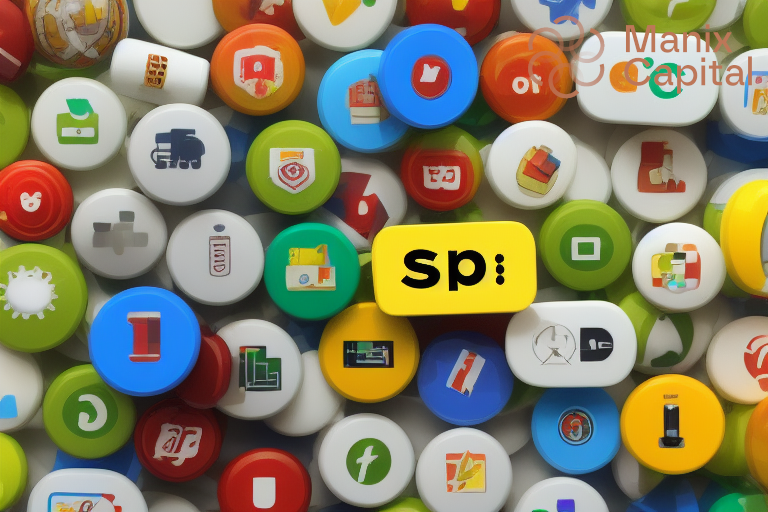Gamification has become a powerful strategy to improve user and customer engagement in different areas, and startups are no exception. In this article, we will explore how gamification can be effectively applied in startups to drive engagement, loyalty and user base growth. We will discover what gamification is, how it works and what benefits it can offer to startups. Get ready to dive into the exciting world of gamification!
What is gamification?
Gamification is the process of incorporating game elements and mechanics in non-game contexts in order to motivate, engage and enhance people’s participation. It consists of applying game principles and dynamics, such as rewards, challenges, competitions and levels, to activities that are not normally considered games.
Gamification is based on the idea that human beings have an innate tendency to seek challenges, achieve goals and receive rewards. By applying game elements in non-game environments, we seek to take advantage of this intrinsic motivation to stimulate engagement and active participation.
How gamification works
Gamification is based on a number of key components that contribute to its effectiveness. These components include:
- Clear objectives: Gamification must establish clear and defined objectives for users. These objectives can be both individual and collective, and must be achievable but challenging enough to maintain the interest of the participants.
- Game mechanics: Different game mechanics, such as points, levels, badges, leaderboards and prizes, are used to motivate and reward participants. These mechanics are strategically designed to generate a sense of achievement and satisfaction as users progress through the gamification process.
- Feedback and feedback: Providing constant feedback and feedback is fundamental in gamification. Users should receive clear and timely information on their progress, achievements and areas for improvement. This allows them to adjust their behavior and remain motivated to achieve the established objectives.
- Social interaction: Gamification encourages social interaction by allowing users to share their progress, compete with each other and collaborate in achieving goals. Friendly competition and collaboration can increase the motivation and commitment of participants.
- Personalization: The ability to personalize the gamification experience is important to keep users interested and engaged. Allowing users to choose their path, set their own goals or customize their avatar or profile can increase their sense of belonging and motivation.
Benefits of gamification for startups
Gamification offers a wide range of benefits for startups looking to increase user and customer engagement. Some of the most outstanding benefits include:
- Increased participation and loyalty: Gamification provides an additional incentive for users to actively participate in the startup’s activities. By setting goals, rewards and challenges, users are motivated to interact on a more frequent and prolonged basis, which in turn increases brand or product loyalty.
- Improved user retention: Gamification can help reduce user abandonment rates by keeping users engaged and motivated over the long term. By offering unlockable rewards, levels or achievements, you create a sense of progression and accomplishment that can keep users interested and engaged with the platform or service.
- Data generation and analysis: Gamification allows the collection of data on user behavior, preferences and performance. This data can be used to perform analysis and gain valuable insights into usage patterns, areas for improvement and opportunities for customization. These insights can be used to optimize the user experience and make informed strategic decisions.
- Community building and word-of-mouth promotion: Gamification encourages social interaction and the creation of communities around the startup. Users can compete against each other, collaborate in challenges and share their progress on social networks or other channels. This social interaction can generate greater reach and promote positive word-of-mouth, which can attract new users and customers.
- Generation of positive emotions: Games usually arouse positive emotions, such as fun, excitement and satisfaction. By incorporating gamification elements into the user experience, startups can generate positive emotions that are associated with their brand or product. These emotions can strengthen the emotional bond with users and improve brand perception.
Examples of gamification in startups
There are numerous examples of startups that have successfully applied gamification to improve user and customer engagement. Some notable examples include:
- Duolingo: This language learning platform uses gamification to motivate users to study on a regular basis. Users earn points, level up and unlock achievements as they progress in their learning. In addition, Duolingo includes competitive elements by allowing users to compete with friends and set daily study goals.
- Fitbit: Fitbit, a company dedicated to physical activity tracking devices, uses gamification to motivate users to reach their daily activity goals. Users earn virtual badges and prizes by achieving exercise milestones, such as walking a certain number of steps or burning a certain number of calories. They can also participate in challenges with other users and compare their progress.
- Nike+: Nike+ is an app that combines gamification and community to motivate runners to reach their training goals. Users can set goals, log their runs, receive virtual rewards and compete with other runners. The application also offers personalized workouts and the possibility of sharing achievements on social networks.
How to implement gamification in a startup
Effective implementation of gamification in a startup requires a strategic and careful approach. Here are some key steps to successfully implement gamification:
- Define clear objectives: Before starting, it is important to define the specific objectives to be achieved with gamification. This may include increasing user participation, improving retention, promoting specific actions or encouraging social interaction. Objectives should be clear, measurable and aligned with the startup’s overall strategy.
- Understand the users: It is critical to thoroughly understand users and their needs, preferences and motivations. Conducting market research, surveys or interviews with users can provide valuable information for designing a relevant and engaging gamification experience.
- Identify the right game mechanics: Once the needs and preferences of users are understood, the most appropriate game mechanics for the startup can be identified. These mechanics may include points, levels, challenges, rewards and competitions. It is important to choose those that align with objectives and resonate with users.
- Design an engaging experience: The design of the gamification experience must be attractive, intuitive and easy to use. Users should quickly understand how to participate, what actions to take and what rewards they can obtain. The experience must be visually appealing and have constant feedback elements to keep users motivated.
- Evaluate and adjust: Once gamification has been implemented, it is important to regularly evaluate its effectiveness and make adjustments based on the data and feedback collected. This involves analyzing key metrics such as user engagement, retention and time spent on the platform. If areas for improvement are identified, adjustments can be made to game mechanics or the overall gamification experience.
In conclusion, gamification can be a powerful tool to boost user and customer engagement in startups. By applying game principles and mechanics, you can motivate users to actively participate, increase their loyalty and promote social interaction. By implementing gamification in a strategic and user-centric way, startups can achieve positive results and differentiate themselves in a competitive market. So don’t hesitate to explore the potential of gamification in your startup and enjoy the benefits it can offer!


